
الهيئة العامة للإحصاء تطلق مسح أسري سنوي حتى العام 2020
12-09-2017
في خطوة لعمل احصائي نوعي لقياس التأثيرات الاقتصادية والاجتماعية على الأسرة
الهيئة العامة للإحصاء تطلق مسح أسري سنوي حتى العام 2020
بدأت الهيئة العامة للإحصاء ( GaStat ) نهاية الأسبوع المنصرم بزيارة 24,000 أسرة في كافة مناطق المملكة لإجراء مسح يستهدف الأسر لبناء مؤشرات اقتصادية واجتماعية ودعت كافة المواطنين والمقيمين إلى التعاون مع الباحثين الإحصائيين العاملين في الميدان بمختلف مناطق المملكة العربية السعودية الـ ( 13 ) وتشمل المُدن والمحافظات التابعة لها ، وتستمر زيارات الأسر من قِبل أكثر من 355 باحث ميداني حتى 8 شعبان 1438هـ الموافق 4 مايو 2017م
وأوضح معالي رئيس الهيئة العامة للإحصاء د.فهد بن سليمان التخيفي بأنَّ هذا المسح يأتي امتدادًا لممكنات دعم متخذي القرار في تطوير دراسة الحالة الاقتصادية والاجتماعية للأسر بصفة دورية لدعم برنامج التحول الوطني من خلال توفير المؤشرات والقراءات الاقتصادية للأسر على أساس سنوي مستمر، إضافة إلى تتبع وتقييم تغييرات المؤشرات الاقتصادية والاجتماعية للأسر المعيشية وسلوكها الاستهلاكي حتى العام 2020، وأوضح معالي رئيس الهيئة مسح اقتصاد الأسرة يُعد أحد المنتجات الإحصائية الجديدة التي تم تصميمها بالتعاون مع بعض الجهات الحكومية من جهة وتنسجم مع الممارسات العالمية في مثل هذه المسوح من جهة أخرى لتلبي متطلبات التغييرات الاقتصادية العامة۔
ولذلك فإنَّ المسح يغطي ثمانية جوانب رئيسية : بيانات القائمة الأسرية ، بيانات عن التعليم ، بيانات عن العمل ، بيانات عن الخصائص السكنيّة ، بيانات الدخل والإنفاق ، بيانات الظروف المعيشيّة، بيانات نشاط الأسرة الاقتصادي ، و بيانات الآراء والتطلّعات المستقبليّة للأسرة وليكون هذا المسح مُكمل للمسوح الأخرى التي تنفذها الهيئة ، وأضاف معاليه بأنَّ نتائج المسح سوف يتم نشرها في أغسطس القادم بأذن الله .
من جهة أخرى التقت الهيئة العامة للإحصاء بعدد من الجهات الحكومية المستفيدة من نتائج المسح الاقتصادي للأسرة " وزارة الصحة , وزارة العمل , وزارة التعليم , وزارة التجارة والاستثمار , وزارة المالية , وزارة العمل والتنمية الاجتماعية " تزامنت مع انطلاق الأعمال الميدانية بهدف التعريف بالمسح والنتائج المتوقعة بوصفه أحد المسوح الوطنية الهامة
وأكدتْ الهيئة العامة للإحصاء بأنَّ جميع البيانات يتم التعامل معها كأساس معلوماتي يَعتمِدُ عليه متخذو القرارات التنموية في كافة الجهات الحكومية ذات العلاقة والتي تعود بنفعها على المواطن والمقيم ، كما تنوه الهيئة بأن جميع الباحثين الإحصائيين يحملون بطاقات رسمية ومخولين بشكل رسمي لجمع البيانات ليتم حفظها والتعامل معها بسرية تامة وفقًا لنظام الإحصاءات العامة الصادر من مجلس الوزراء ، كما أتاحت الهيئة من خلال موقعها الرسمي على الإنترنت فرصة الاطلاع على استمارات البحث الميدانية التي سوف يتم جمع البيانات بناءً عليها ، ويمكن لكافة الأسر والمُنشآت الاستفسار من خلال الرقم المجاني لمركز الاتصال 8001240440 عن هذه الأعمال وغيره
الجدير بالذكر؛ أنَّ الهيئة العامة للإحصاء تتَبع المعايير الدولية المعتمدة في اختيار العينة لكافة أعمالها الإحصائية بوصفها جزء من المجتمع الإحصائي الذي يتم اختياره وفق أساليب المعاينة الإحصائية ويشترط أن تكون ممثلة للمجتمع الذي يتم دراسته وتتضمن خصائص المجتمع حتى يتم تعميم نتائجها كإحصاءات رسمية، وتقوم فور الانتهاء منها بنشرها عبر موقعها الرسمي على الإنترنت. .

السعودية " الثانية عربياً والثامن والثلاثين عالمياً " ضمن الدول ذات التنمية البشرية المرتفعة جداً
12-09-2017
وفق تقرير التنمية البشرية الصادر عن برنامج الأمم المتحدة بتقدم ملحوظ
السعودية " الثانية عربياً والثامن والثلاثين عالمياً " ضمن الدول ذات التنمية البشرية المرتفعة جداً
حققت المملكة العربية السعودية الترتيب الثاني عربياً والثامن والثلاثين عالمياً في قائمة الدول ذات التنمية البشرية المرتفعة جداً وفق تقرير التنمية البشرية عن برنامج الأمم المتحدة الإنمائي لعام 2016م.
وأوضح معالي رئيس الهيئة العامة للإحصاء الدكتور فهد بن سليمان التخيفي أن المملكة العربية السعودية وبحمد الله، حققت هذا التقدم الملموس والذي عكس في تقرير التنمية البشرية الصادر عن برنامج الأمم المتحدة الإنمائي لعام 2016م، وصُنفت فيه ضمن الدول ذات التنمية البشرية المرتفعة جداً بعد أن كانت وإلى ما قبل عام 2014م ضمن الدول ذات التنمية البشرية المرتفعة.
وأكد معاليه بأن التقرير يعد ضمن سلسلة تقارير تصدر سنوياً عن برنامج الأمم المتحدة الإنمائي منذ عام 1990م، ويشمل بالإضافة إلى المواضيع الرئيسية التي يعرضها سنوياً ويركز على معالجة أحدها، مجموعة من الجداول الإحصائية للعديد من المؤشرات يأتي من أهمها، جدول يتضمن دليل التنمية البشرية مرتبة حسب مستوى التنمية البشرية في جميع دول العالم، ويُعد هذا الدليل مقياساً يختصر الإنجـازات التي تحققها الدول على صعـيد التنمية من خـلال ثلاثة أبعـاد رئيسية هي : الحياة الصحية للفرد، واكتساب المعرفة، ومستوى المعيشة اللائق.
وأشار معاليه إلى أن التحسن الملحوظ على مستوى المملكة عالمياً والذي اصبحت بموجبه الثانية عربياً في تقرير التنمية البشرية، وتحقيقها ترتيباً متقدماً بين دول العالم بلغ (38)، مقارنة بترتيبها في العام الماضي والذي بلغ (39) يُعد استمرار للتحسن الملاحظ في ترتيب المملكة خلال الثلاث سنوات الماضية حيث كان منذ ثلاث سنوات يتراوح بين (55) في عام 2010م و (77) في عام 2005م، ويعود هذا التغير إلى التحسن الملحوظ في جميع عناصر مكونات دليل التنمية البشرية، المتمثلة في العمر المتوقع عند الميلاد، ومتوسط سنوات الدراسة المتوقع، والذي يُقصد به عدد سنوات الدراسة التي يتوقع أن يتلقاها طفل في سن الدخول للمدرسة مع افتراض بقاء أنماط معدلات الالتحاق حسب الفئات العمرية كما هي عليه طيلة حياة الطفل، ونصيب الفرد من الدخل القومي الإجمالي والذي يحسب بمعادل القوة الشرائية بالدولار.
وتجدر الإشارة الى ان تقرير التنمية البشرية يقسم دول العالم إلى أربع مجموعات حسب قيمة مؤشر دليل التنمية البشرية، فالدول ذات التنمية البشرية المنخفضة التي يقل لها قيمة الدليل عن (550ر0)، ومجموعة التنمية البشرية المتوسطة التي يتراوح لها قيمة الدليل بين (550ر0 ــــ 699ر0)، ومجموعة التنمية البشرية المرتفعة عندما يتراوح لها قيمة الدليل بين (700ر0 ـــ 799ر0)، ومجموعة الدول ذات التنمية البشرية المرتفعة جداً عندما يكون قيمة الدليل (800ر0) فأكثر، وقد بلغ مؤشر المملكة في التقرير الصادر عام 2016م والذي تناول موضوع التنمية البشرية للجميع (847ر0).
وأختتم معاليه تصريحه بالتأكيد على أن هذا التقرير الصادر عن الأمم المتحدة يعكس بوضوح مستوى التنمية البشرية التي تعيشها المملكة في مختلف المجالات، ويبرز الجهود المبذولة على كافة الأصعدة، والتي تحققت استجابة للتوجيهات السديدة والمستمرة من خادم الحرمين الشريفين، وسمو ولي عهده الأمين، وسمو ولي ولي العهد، حفظهم الله، كما تعكس الأهداف التي بنيت عليها الرؤية السعودية 2030م والتي تمثل وثيقة طموحة تهدف لتحقيق التنمية المستدامة، ومواكبة كافة المتغيرات التنموية المتسارعة عالمياً.
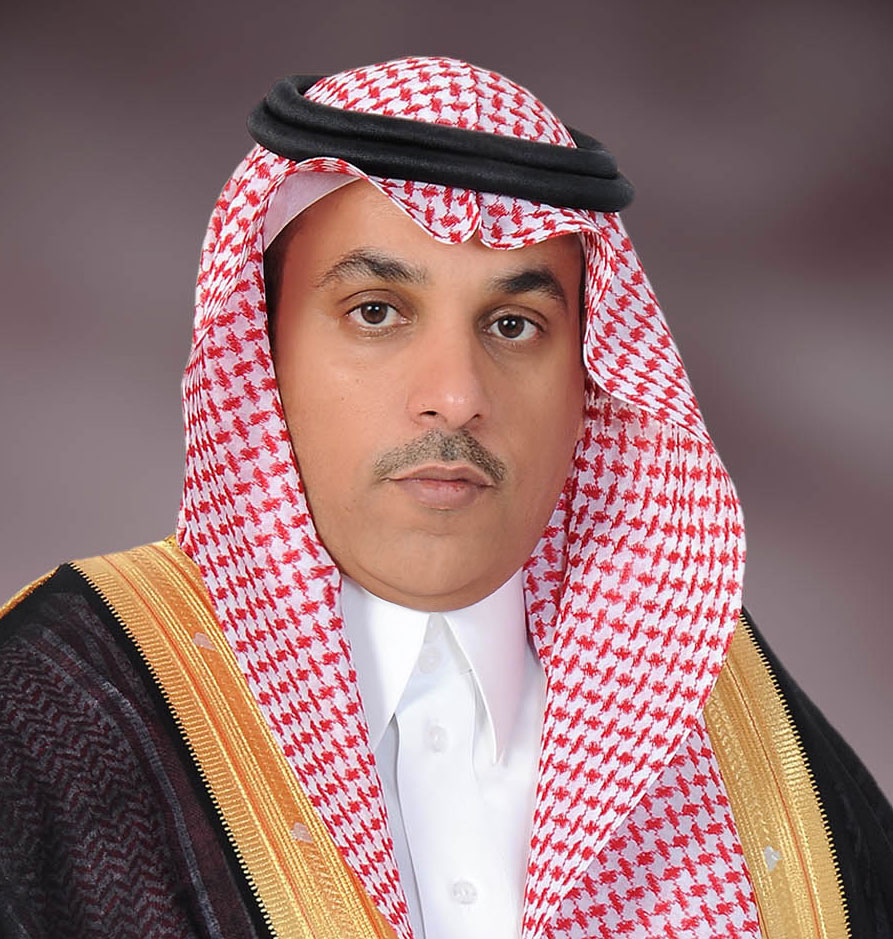
مجلس الوزراء يوافق على التعاون الإحصائي مع هولندا وكوريا
12-09-2017
تشمل التعداد التسجيلي وتكوين نظام مركزي للبيانات
مجلس الوزراء يوافق على التعاون الإحصائي مع هولندا وكوريا
استمرارًا لدعم قطاع الإحصاء في المملكة العربية السعودية وافق مجلس الوزراء في جلستي الثالث ، والسابع عشر من رمضان الجاري على تفويض معالي وزير الاقتصاد والتخطيط أو من ينيبه، بالتباحث مع الجانب الهولندي ، والجانب الكوري في مجال تطوير الإحصاء من خلال توقيع مذكرات تفاهم بهذا الخصوص مع الجانبين.
وقد ثمَّن معالي رئيس الهيئة العامة للإحصاء د. فهد بن سليمان التخيفي هذه الموافقة الكريمة ، وأكد بأنَّ قطاع الإحصاء في المملكة العربية السعودية يجد الدعم المستمر من القيادة الرشيدة أيدها الله على كافة المستويات مما يؤكد أهمية دور الإحصاءات في دعم التنمية ، وأوضح بأنَّ الهدف من هذه الاتفاقيات هو تطوير العمل الإحصائي وفق أفضل الممارسات الدولية في هذا المجال حيث ستشمل المباحثات مع الجانب الهولندي نطاق تطوير الآليات الحديثة لتنفيذ التعداد التسجيلي وفقاً للمعايير الدولية المتعارف عليها، ويشمل ذلك تحديد منهجية العمل الإحصائي لتنفيذ التعداد، وتوثيق البيانات والمعلومات وحفظها في الوثائق الإحصائية إضافة إلى تطوير الآليات الفنية اللازمة لتكوين منظومة شاملة من قواعد بيانات التعداد، والاستفادة منها في الأعمال الإحصائية من مسوح إحصائية ودراسات سواء تلك التي تنفيذها الهيئة العامة للإحصاء أو الجهات العامة أو المنشآت الخاصة كما سيشمل نطاق التعاون السعودي الهولندي تشجيع تبادل البرامج الخاصة بنشر الوعي الإحصائي بما يكفل المشاركة المجتمعية، ومشاركة قصص النجاح ، و تشجيع تبادل الخبرات بين البلدين، والمشاركة في الدورات التدريبية والمؤتمرات والندوات والحلقات الدراسية وورش العمل المتعلقة بالإحصاء.
أما أوجه التعاون المتوقعة للتباحث مع الجانب الكوري فقد أبانَ معالي رئيس الهيئة بأنّها تشمل تطوير الآليات التقنية اللازمة للقيام بجمع الإحصاءات ونشرها وفقاً للمعايير الدولية المتعارف عليها والعمل على تحديد الأسس اللازمة لتكوين منظومة شاملة من قواعد البيانات الإحصائية لمختلف المجالات الإحصائية وتبادل الخبرات في المتطلبات اللازمة لإيجاد نظام مركزي للمعلومات يرتبط آلياً بجميع الجهات العامة، وآليات تفعيلها و تطوير السياسات العامة والآليات لتقديم الخدمات الاستشارية والفنية في مجال الإحصاء للجهات العامة والمنشآت الخاصة.
الجدير بالذكر بأنَّ الهيئة تعمل وفق سلسلة من الخطوات التحضرية مع عدد من الجهات المحلية والدولية على استكمال التحضيرات الفنية لتعداد ( 2020م – 1440هـ ) والذي سيكون لأول مرة تعداد تسجيلي يعتمد على السجلات الإدارية ( رقم السجل المدني ، رقم الهوية الوطنية ، ورقم هوية المقيم ) و يرتبط بالعنوان الوطني ويتميز هذا التعداد عن التعدادات السابقة بأنه يأتي في ظل ربط إلكتروني شامل مع عدد من الجهات ذات العلاقة كمركز المعلومات الوطني ووزارة التعليم ووزارة الإسكان والبريد السعودي ومختلف القطاعات المرتبطة ببيانات المواطن والمقيم والمساكن.

" الإحصاء" : انخفاض مؤشر أسعار العقارات للربع الأول من 2017
12-09-2017
المؤشر يرتكز على البيانات السجلية من وزارة العدل
" الإحصاء" : انخفاض مؤشر أسعار العقارات للربع الأول من 2017
أصدرت الهيئة العامة للإحصاء (GASTAT) اليوم الاثنين 27 رجب 1438هـ الموافق 24 أبريل 2017م تقرير مؤشر الرقم القياسي لأسعار العقارات في المملكة العربية السعودية والذي يعتمد على البيانات السجلية المتوفرة لدى وزارة العدل عن الصفقات العقارية , ووصفت الهيئة الرقم القياسي لأسعار العقارات بأنّه أداة مهمة لدعم الجهات المعنية باتخاذ القرارات الاقتصادية والإحصائية المتعلقة بتحركات أسعار العقارات والتنبؤات المستقبلية خلال فترات زمنية مختلفة ويشمل المؤشر ثلاثة قطاعات رئيسية تتكون من عدة أصناف عقارية: قطاع سكني ويتكون من (قطعة أرض ، عمارة ، فيلا، شقة وبيت) ، وقطاع تجاري يتكون من (قطعة أرض، عمارة ، معرض/محل ومركز تجاري) ، وقطاع زراعي ويندرج تحته ( الأرض الزراعية )
وقد أوضح مؤشر الرقم القياسي لأسعار العقارات انخفاضًا في مستوى أسعار العقارات خلال الربع الأول لعام 2017م بلغت نسبته 2.3% مقارنةً بالربع السابق (الربع الرابع 2016) ، كما سجل المؤشر للربع الأول من عام 2017م انخفاضاً بلغت نسبته 9.9% مقارنةً بنظيره من العام السابق (الربع الأول 2016م).
وأرجع التقرير الذي تم نشره اليوم انخفاض الرقم القياسي لأسعار العقارات للربع الأول من العام 2017م عن الربع السابق (الربع الرابع 2016) إلى الانخفاض الذي شهدته كافة القطاعات الرئيسية المكونة للمؤشر: القطاع التجاري (1.8%) والقطاع السكني (2.6%) والقطاع الزراعي (0.3%).
كما جاء انخفاض الرقم القياسي لأسعار العقارات للربع الأول من العام 2017م مقارنةً بنظيره من العام السابق (الربع الأول 2016م) إلى الانخفاض الذي شهدته أيضاً جميع القطاعات الرئيسية المكونة للمؤشر: القطاع التجاري (11.7%) والقطاع السكني (9.5%) والقطاع الزراعي ( 1.3% )
وأوضحت الهيئة العامة للإحصاء في الندوة التعريفية التي أقيمت ضمن فعاليات معرض "ريستاتكس" بمدينة الرياض بأنَّه من منطلق مهامها كمرجع رسمي للإحصاءات في المملكة العربية السعودية وكمشرف ومنظم للقطاع الإحصائي حرصت على متابعة تحركات أسعار الوحدات المكونة لقطاع العقار ورصد قيم صفقاتها في مختلف مناطق المملكة ، ومتابعة التغيرات التي تطرأ عليها من فترة إلى أخرى من خلال المنتج الإحصائي " الرقم القياسي لأسعار العقارات " والذي تم إعداده ارتكازاً على البيانات التي توفرها وزارة العدل في هذا المجال وذلك في إطار التكامل والتعاون بين مختلف الأجهزة الحكومية الرامي إلى دفع عجلة التنمية المستدامة في المملكة .
كما أشارت الهيئة إلى أنَّ هذا المنتج يهدف إلى إيجاد مؤشرات إحصائية عقارية متميزة تقيس أداء السوق العقاري بالمملكة وسد ثغرة البيانات في هذا القطاع ، ويعتبر أداة مهمة لدعم الجهات المعنية باتخاذ القرارات الاقتصادية المتعلقة بهذا الشأن ، وتفيد بياناته المهتمين بالتحليلات الاقتصادية والإحصائية الخاصة بتحركات أسعار العقارات والتنبؤات المستقبلية خلال فترات زمنية مختلفة وقد أصدرت الهيئة نشرة متكاملة عن الرقم وتفاصيله.
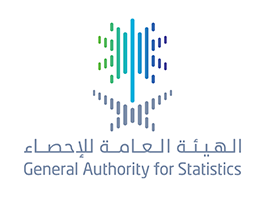
الهيئة العامة للإحصاء : ارتفاع الصادرات وانخفاض الواردات السلعية للمملكة العربية السعودية في الربع الأول 2017
27-07-2017
الهيئة العامة للإحصاء : ارتفاع الصادرات وانخفاض الواردات السلعية للمملكة العربية السعودية في الربع الأول 2017
بلغت قيمة الصادرات السلعية للمملكة العربية السعودية خلال الربع الأول 2017 (206984) مليون ريال مقابل (140186) مليون ريال لنفس الربع من العام الماضي أي بارتفاع (66799) مليون ريال بنسبة (47.7%)، فيما بلغت قيمة الصادرات غيـر البترولية خلال الربع الأول 2017 (44849) مليون ريال مقابل (43029) مليون ريال خلال نفس الفتـرة من العام السابق بارتفاع مقداره (1820) مليون ريال بنسبة (4.2%)، كما سـجلت قيمة واردات المملكة العربية السعودية خلال الربع الأول انخفاضاً نسبته (12.3%) لتسجل (125558) مليون ريال بانخفاض مقداره (17542) مليون ريال عن نفس الربع من العام الماضي والذي سـجلت فيه (143100) مليون ريال.
وأوضـح التقرير الربعـي الصادر عن الهيئة العامة للإحصاء للربع الأول 2017 ، أن قيمة الصادرات السلعية للمملكة العربية السعودية قد سـجلت ارتفاعاً نسبته (5.2%) مقارنة بالربع السابق (الربع الرابع 2016) والذي سـجلت فيه (196842) مليون ريال، فيما سجلت الصادرات غيـر البترولية انخفاضاً نسبته (4.5%) مقارنة بالربع السابق (الربع الرابع 2016) والذي سجلت فيه (46964) مليون ريال. كما سـجلت قيمة واردات المملكة العربية السعودية انخفاضاً نسبته (0.05%) مقارنة بالربع السابق والذي سـجلت فيه (125616) مليون ريال، وبلغت نسبة الصادرات غيـر البترولية للواردات (أي تغطية الصادرات غيـر البترولية للواردات) (35.7%) فـي الربع الأول 2017 مقابل (30.1%) لنفس الربع من العام الماضي، إلا أن هذه النسبة جاءت منخفضة عن الربع السابق (الربع الرابع 2016) والذي سـجلت فيه (37.4%).
ويوضـح التقرير أن (20.4%) من الواردات كانت سلع رأسمالية و (39.3%) سلع وسيطة و (40.3%) من الواردات كان سلع للاستهلاك النهائي.
كما يلاحظ أن الارتفاع في قيمة الصادرات غيـر البترولية في الربع الأول 2017 مقارنة بنفس الربع من العام الماضي جاء نتيجة لارتفاع أهم الأقسام الرئيسية للسلع المصدرة وفي مقدمتها اللدائن والمطاط ومصنوعاتها والتـي ارتفعت بنسبة (9.8%) إلى قيمة (14570) مليون ريال.
كذلك منتجات الصناعات الكيماوية وما يتصل بها، فقد ارتفعت إلى (13355) مليون ريال مقابل (11361) مليون ريال في الربع الأول 2016 أي بارتفاع (1993) مليون ريال بنسبة (17.5%) ، أيضاً ارتفعت المعادن العادية ومصنوعاتها إلى (3703) مليون ريال مقابل (3636) مليون ريال في الربع الأول 2016 أي بارتفاع (66) مليون ريال بنسبة (1.8%) ، كما بلغت صادرات المملكة العربية السعودية من (معدات النقل وأجزاؤها والآلات والمعدات والأجهزة الكهربائية وأجزاؤها) (6204) مليون ريال وهو ما يشكل (13.8%) من صادرات المملكة العربية السعودية غير البترولية خلال هذه الفترة .
وعلـى صعيد الواردات فقد انخفضت قيمة واردات الآلات والمعدات والأجهزة الكهربائية وأجزاؤها بنسبة (19.3%) لتسـجل في الربع الأول 2017 (30191) مليون ريال مقابل (37397) مليون ريال في الربع الأول 2016، كما انخفضت قيمة الواردات من معدات النقل وأجزاؤها إلى (20529) مليون ريال مقابل (25377) مليون ريال أي بانخفاض (19.1%)، أما قيمة الواردات من منتجات الصناعات الكيماوية وما يتصل بها فقد انخفضت بنسبة (4.7%) لتسـجل (12638) مليون ريال في الربع الأول 2017، مقابل (13268) مليون ريال لنفس الفترة من العام الماضي.
وأوضـح التقرير ارتفاع إجمالي الكميات المصدرة من السلع غيـر البترولية إلى (13248) ألف طن في الربع الأول 2017 مقابل (13103) ألف طن في الربع الأول 2016 أي بارتفاع (1.1%)، كما انخفضت كمية الواردات في الربع الأول 2017 إلى (17130) ألف طن مقابل (20561) ألف طن لنفس الربع من العام الماضي بانخفاض (16.7%).
وحول التوزيع الجغرافـي لصادرات المملكة العربية السعودية من السلع غيـر البترولية، أوضـح التقرير أن الصادرات إلى الدول الآسيوية عدا العربية والإسلامية، تأتي في مقدمة المجموعات التـي تم التصدير إليها، وقد سـجلت ارتفاعاً بنسبة (32.1%) لتسـجل (14246) مليون ريال في الربع الأول 2017 مقابل (10781) مليون ريال في الربع الأول 2016.
وانخفضت الصادرات إلى دول مجلس التعاون الخليجي بنسبة (4.9%) لتسـجل (11934) مليون ريال، أما بقية المجموعات فقد انخفضت الصادرات إليها بنسبة (5.3%) لتسجل (18669) مليون ريال.
الإمارات العربية المتحدة تتصدر الدول المصدر إليها في الربع الأول 2017:
شكلت كل من الإمارات العربية المتحدة والصين والهند وسنغافورة والكويت أهم خمس دول تم التصدير إليها، حيث شكلت الصادرات لها (41.7%) من إجمالي الصادرات غيـر البترولية مقابل (36.6%) في الربع الأول 2016.
الصين تتصدر الدول المستورد منها في الربع الأول 2017:
شكلت كل من الولايات المتحدة الأمريكية والصين وألمانيا والإمارات العربية المتحدة واليابان أكبـر خمس دول تم الاستيراد منها، حيث شكلت الواردات السلعية من هذه الدول (45.9%) مقابل (46%) في الربع الأول 2016.
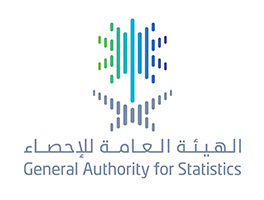
الهيئة العامة للإحصاء تصدر مؤشر الرقم القياسي للعقارات للربع الثاني – 2017م
25-07-2017
يرتكز على البيانات السجلية من وزارة العدل
الهيئة العامة للإحصاء تصدر مؤشر الرقم القياسي للعقارات للربع الثاني – 2017م
أصدرت الهيئة العامة للإحصاء (GASTAT) اليوم الاثنين 1 ذو القعدة 1438هـ الموافق 24 يوليه 2017م مؤشر الرقم القياسي لأسعار العقارات في المملكة العربية السعودية والذي يعتمد على البيانات السجلية المتوفرة لدى وزارة العدل عن الصفقات العقارية . ووصفت الهيئة الرقم القياسي لأسعار العقارات بأنّه أداة مهمة لدعم الجهات المعنية باتخاذ القرارات الاقتصادية والإحصائية المتعلقة بتحركات أسعار العقارات والتنبؤات المستقبلية خلال فترات زمنية مختلفة ويشمل المؤشر ثلاثة قطاعات رئيسية تتكون من عدة أصناف عقارية: قطاع سكني ويتكون من الأصناف التالية (قطعة أرض ، عمارة ، فيلا، شقة وبيت) ، قطاع تجاري ويتكون من الأصناف (قطعة أرض، عمارة ، معرض/محل ومركز تجاري) ، قطاع زراعي ويندرج تحته صنف واحد هو الأرض الزراعية.
وقد أوضح مؤشر الرقم القياسي لأسعار العقارات تراجعاً في مستوى أسعار العقارات خلال الربع الثاني لعام 2017م بلغت نسبته 0,6% مقارنةً بالربع السابق (الربع الأول 2017) ، كما سجل المؤشر للربع الثاني من عام 2017م انخفاضاً بلغت نسبته 8,6% مقارنةً بنظيره من العام السابق (الربع الثاني 2016م).
وأرجع التقرير الذي تم نشره اليوم انخفاض الرقم القياسي لأسعار العقارات للربع الثاني من العام 2017م عن الربع السابق (الربع الأول 2017) إلى الانخفاض الذي شهدهما قطاعان من القطاعات الرئيسية المكونة للمؤشر: القطاع التجاري 2,2% والقطاع الزراعي 0,2% ، في حين ارتفع القطاع السكني 0,2%.
كما جاء انخفاض الرقم القياسي لأسعار العقارات للربع الثاني من العام 2017م مقارنةً بنظيره من العام السابق (الربع الثاني 2016م) إلى الانخفاض الذي شهدته جميع القطاعات الرئيسية المكونة للمؤشر: القطاع التجاري 10,9% والقطاع السكني 7,9% والقطاع الزراعي 1,0% .
ومن منطلق مهامها كمرجع رسمي للإحصاءات في المملكة العربية السعودية وكمشرف ومنظم للقطاع الإحصائي حرصت الهيئة العامة للإحصاء على متابعة تحركات أسعار الوحدات المكونة لقطاع العقار ورصد قيم صفقاتها في مختلف مناطق المملكة ، ومتابعة التغيرات التي تطرأ عليها من فترة إلى أخرى من خلال المنتج الإحصائي " الرقم القياسي لأسعار العقارات " والذي تم إعداده ارتكازاً على البيانات التي توفرها وزارة العدل في هذا المجال وذلك في إطار التكامل والتعاون بين مختلف الأجهزة الحكومية الرامي إلى دفع عجلة التنمية المستدامة في المملكة .
ويهدف هذا المنتج إلى إيجاد مؤشرات إحصائية عقارية متميزة تقيس أداء السوق العقاري بالمملكة وسد ثغرة البيانات في هذا القطاع ، ويعتبر أداة مهمة لدعم الجهات المعنية باتخاذ القرارات الاقتصادية المتعلقة بهذا الشأن ، وتفيد بياناته المهتمين بالتحليلات الاقتصادية والإحصائية الخاصة بتحركات أسعار العقارات والتنبؤات المستقبلية خلال فترات زمنية مختلفة.
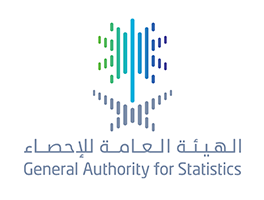
توصيات المنتدى الإحصائي الخليجي الأول
01-06-2017
أولاً: توصيات لرفع كفاءة الأجهزة الإحصائية:
1. تعزيز قدرات المراكز الإحصائية والهيئات الوطنية ورفع كفاءة العاملين فيها.
2. تحسين وتطوير أداء الأجهزة الإحصائية الوطنية من خلال:
أ- تبني مفاهيم جديدة لقياس الأداء تواكب التطورات الاقتصادية والاجتماعية في دول المنطقة.
ب- الشراكة الداخلية بين مختلف الإدارات في الأجهزة الإحصائية للتكامل في إنتاج بيانات ذات موثوقية وشمولية.
ت- تطوير قنوات الحصول على تغذية راجعة حول المنتجات من قبل مختلف أطياف المجتمع
3. تفعيل مشاريع الربط الإلكتروني بين الإدارات الإحصائية في الأجهزة الحكومية (بصفتها جهات مُنتجة للبيانات) والأجهزة الإحصائية الرسمية.
4. حث الأجهزة الإحصائية على تطوير برامج نقل المعرفة وتبادل الخبرات فيما بينها من جهة، وبين الوحدات الإحصائية في الأجهزة الحكومية من جهة أخرى.
ثانيًا: توصيات لرفع كفاءة المنتجات الإحصائية:
1. إجراء تحليل للوضع الراهن خصوصًا للمؤشرات الجديدة وتحديد الآليات المناسبة لتوفير هذه البيانات.
2. تطوير المنتجات الإحصائية من حيث التعاريف والمفاهيم والمحتوى وطريقة العرض ووسائل الوصول للمنتجات والتركيز على الجانب التفاعلي في التطبيقات الإلكترونية
3. العمل على رفع جودة البيانات وشموليتها ونشرها في أوقاتها المحددة للاستفادة منها وتعظيم دورها التنموي.
4. العمل على سد الثغرات في البيانات المطلوبة وتوفير كافة المتطلبات الإحصائية على المستوى الوطني والإقليمي والدولي
5. العمل على ضمان اتساق المؤشرات الوطنية مع المؤشرات العالمية.
6. العمل على تقديم التحليلات الإحصائية لمتخذي القرار كنماذج للتحليل المعمق الذي يساعد على اتخاذ القرار ورسم السياسات.
7. رفع مستوى نشر وتوفير البيانات التفصيلية للمسوح عبر كافة القنوات الرقمية المتاحة.
8. استخدام البيانات الجيومكانية في ربط البيانات السكانية بمكان الإقامة بهدف توفير بيانات أكثر دقة في مختلف المجالات التنموية.
9. العمل على توفير البيانات في مختلف القطاعات وخاصة غير المالية لفهم الصورة الكاملة للاقتصاد.
10. منح البيانات الضخمة مزيدا من الاهتمام من خلال:
أ- إدراج المواضيع المتعلقة بالبيانات الضخمة في الاستراتيجيات الإحصائية الوطنية.
ب- رفع مستوى التعاون مع المنظمات الدولية في مجال البيانات الضخمة والالتزام بالمعايير الدولية.
ت- العمل على إيجاد أطر تشريعية وقانونية للتعامل مع البيانات الضخمة
ث- دراسة المواضيع المهمة التي تتوفر من خلال البيانات الضخمة وأخذ الدور القيادي لنشر وتحليل هذه البيانات.
ج- بناء الشراكات بين الأجهزة الإحصائية والقطاع الخاص للاستفادة من البيانات الضخمة
ثالثاً: توصيات متابعة مؤشرات التنمية المستدامة:
1. تشكيل فرق عمل وطنية وإقليمية تعمل على متابعة التقدم المحرز في مجال إنتاج مؤشرات التنمية المستدامة.
2. إعطاء أهداف التنمية المستدامة الخاصة بالبيئة أهمية عالية وإدراجها في كافة الأعمال الإحصائية للأجهزة الإحصائية.
رابعًا: توصيات تفعيل استخدام التقنية في العمل الإحصائي:
1. متابعة التقدم المضطرد في التقنية للاستفادة في جمع ومعالجة ونشر وتحليل البيانات الإحصائية.
2. الاستفادة من الإمكانات الضخمة لشركات الاتصالات سواء في جمع البيانات أو حفظها عبر الحوسبة السحابية.
3. توظيف الأساليب غير التقليدية في جمع ونشر الإحصاء من منظور المستخدمين للإحصاءات في ضوء وجود ثورة بيانات وتطور وسائل التواصل الاجتماعي.
4. العمل على إنشاء السجل السكاني الذي يسهم في ربط البيانات السكانية والمسكان مع البيانات التعلمية والصحية والاقتصادية من خلال الاستفادة من الأدوات والبرامج التقنية الحديثة وقواعد البيانات في الوزارات المختلفة.
خامسًا: توصيات رفع الوعي الإحصائي:
1. العمل المشترك بين المراكز الإحصائية الوطنية والمركز الإحصائي الخليجي لإدراج المعرفة الإحصائية كعنصر مهم في الخطط الاستراتيجية ومشاريع العمل المستقبلية.
2. العمل على بناء شراكات استراتيجية بين المراكز الإحصائية ومختلف الجهات ذات العلاقة (القطاع الأكاديمي، القطاع الإعلامي، القطاع الخاص) لتعزيز المعرفة الإحصائية.
3. تصميم برامج تدريبية متخصصة في الوعي الإحصائي
4. بناء مؤشرات لقياس المعرفة الإحصائية تشمل جميع القطاعات وتتجاوب مع المستوى التعليمي والمهني للمستخدمين.
5. تحويل البيانات التي يتم إنتاجها في الأجهزة الإحصائية إلى قوالب بصرية فنية تخاطب كافة شرائح المجتمع.
6. تطوير أساليب نشر البيانات واستخدام الاتجاهات الحديثة في صناعة المحتوى وتقديمه.
سادساً: توصيات رفع كفاءة القطاع الإحصائي:
1. التنسيق على المستوى الوطني بين الجهاز الإحصائي والجهات الأخرى للتعامل مع البيانات الضخمة لضمان المصداقية والتحقق من جودة البيانات
2. إعداد دراسة لإنشاء مجالس استشارية بمشاركة جميع فئات المستخدمين للمنتجات الإحصائية الرسمية حسب القطاعات الإحصائية.
3. العمل على زيادة الارتباط بين الجامعات والمؤسسات البحثية والأكاديمية وبين الأجهزة الإحصائية الوطنية.
4. إجراء حوار بين صانعي السياسات والباحثين وطالبي البيانات لفهم أكبر بشأن الأولويات ونوع البيانات.
سابعاً: توصيات تطوير العمل الإحصائي الخليجي:
1. العمل على تطوير آليات التشاركية بين الأجهزة الإحصائية الوطنية والمركز الإحصائي الخليجي لضمان اتساق الخطط الاستراتيجية ومشاريع العمل المستقبلية بين دول الخليج.
2. رفع مستوى التعاون بين الأجهزة الوطنية الإحصائية لتأهيل وتدريب الكوادر الوطنية في المجال الإحصائي والتقني.
3. العمل على تطوير مؤشرات لقياس العمل الخليجي المشترك.
4. متابعة الأجهزة الإحصائية الوطنية في تطوير استخدام السجلات الإدارية ومواكبة المعايير الدولية في هذا الإطار.
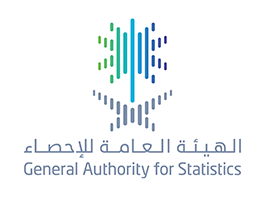
الهيئة العامة للإحصاء تصدر الكتاب الإحصائي السنوي 2016
07-05-2017
يتضمن بيانات ما يزيد عن 57 جهة
الهيئة العامة للإحصاء تصدر الكتاب الإحصائي السنوي 2016
أصدرتْ الهيئة العامة للإحصاء ( GaStat) الكتاب الإحصائي السنوي الـ ( 52 ) للعام 1437/1438هـ (2016م) ، ويُعدُّ الكتاب الإحصائي أحد أهم المنتجات الإحصائية التي تصدر عن الهيئة العامة للإحصاء بهدف رصد وتوثيق البيانات والمعلومات الإحصائية وإبراز أنشطة الأجهزة الحكومية والقطاع الخاص، ويعكسُ من عامٍ إلى آخر مُعدَّلات النموُّ والتطور في المجالات السكانية والاجتماعية والاقتصادية، ويشتملُ الكتاب الإحصائي والذي صدر في ما يزيد عن 460 صفحة على أهم البيانات والمعلومات لقطاعات التنمية المختلفة إضافةً إلى أهم نتائج الأعمال الإحصائية التي أجرتْها الهيئة على مدى عامٍ كامل وما ورد إليها من الإدارات الإحصائية في الأجهزة الحكومية ، وتوزعت كامل البيانات والمعلومات في 15 فصل ، كما أفرد الكتاب 289 جدول تضم معلومات وبيانات أكثر من 57 جهة حكومية .
وتشتمل البيانات المتضمنة الكتاب الإحصائي, إحصاءات السكان, التعليم والتدريب , الصحة , الخدمات الاجتماعية, التأمينات الاجتماعية ,النقل والاتصالات ,الطاقة والمياه ,سوق العمل ,الأسعار والأرقام القياسية, الشؤون المالية والنقدية والحسابات القومية, الصناعة ,الزراعة والصيد , التجارة الداخلية والخارجية ,مجلس التعاون , إضافة إلى عدد من بيانات الأحوال الطبيعية وقراءات موازين الحرارة وملخصات شهرية حسب محطات الرصد لدرجة الحرارة المئوية والتكرار للظواهر الطبيعية مثل الغبار ،العواصف الرعدية ، ضباب ،كمية هطول الأمطار , وأيضاً معدلات شهرية للرطوبة والضغط الجوي وسرعة الرياح .
